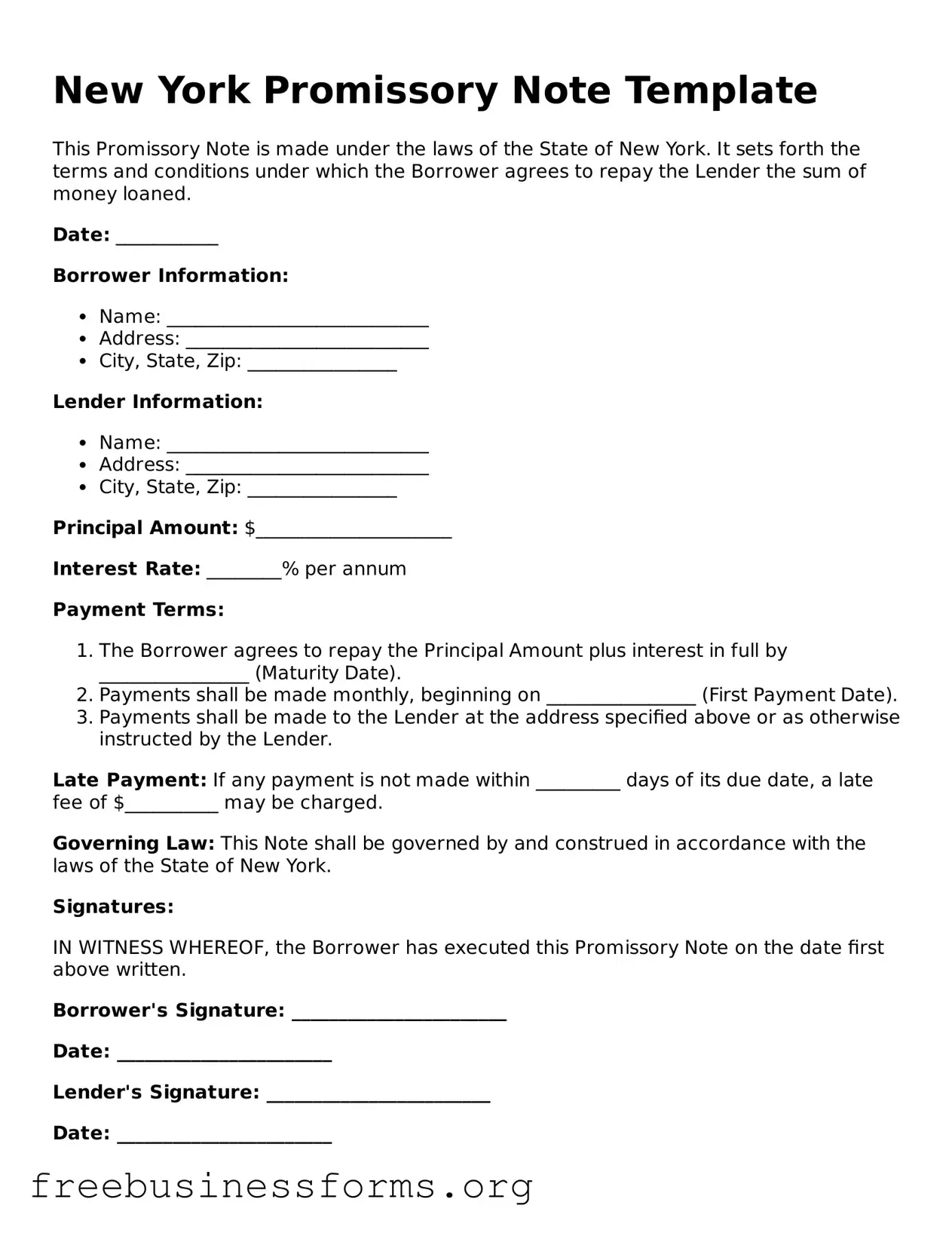New York Promissory Note Template
This Promissory Note is made under the laws of the State of New York. It sets forth the terms and conditions under which the Borrower agrees to repay the Lender the sum of money loaned.
Date: ___________
Borrower Information:
- Name: ____________________________
- Address: __________________________
- City, State, Zip: ________________
Lender Information:
- Name: ____________________________
- Address: __________________________
- City, State, Zip: ________________
Principal Amount: $_____________________
Interest Rate: ________% per annum
Payment Terms:
- The Borrower agrees to repay the Principal Amount plus interest in full by ________________ (Maturity Date).
- Payments shall be made monthly, beginning on ________________ (First Payment Date).
- Payments shall be made to the Lender at the address specified above or as otherwise instructed by the Lender.
Late Payment: If any payment is not made within _________ days of its due date, a late fee of $__________ may be charged.
Governing Law: This Note shall be governed by and construed in accordance with the laws of the State of New York.
Signatures:
IN WITNESS WHEREOF, the Borrower has executed this Promissory Note on the date first above written.
Borrower's Signature: _______________________
Date: _______________________
Lender's Signature: ________________________
Date: _______________________
